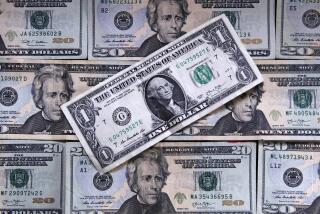Tax Break for Pensions May Not Be Worth It
- Share via
Congress handed wealthy retirees a limited-time offer in last year’s tax bill that may not be worth taking.
The offer is this: Pension distributions that total more than $155,000 per year or $775,000 as a lump sum, typically subject to a 15% excise distribution tax, will be exempt from that tax if they are taken in 1997, 1998 and 1999.
On first blush, this sounds like it is a great deal for anyone with a fat pension pot.
A second tax provision that allows pensioners to spread out the tax burdens of their pension distributions expires after 1999, making the idea of getting your money out sooner rather than later look like a really good deal. But there are other complicating factors, and some retirees may decide to forgo the gift.
Why? Taking a large sum out of a tax-deferred account makes it and all subsequent earnings on it subject to income taxes. And at those levels of income, the taxes are quite high. Those taxes also reduce the pot of money available to earn interest, dividends and capital gains in the future. Without the ability to compound tax-free, those numbers can end up being smaller than they would have been even with the excise distribution tax.
According to planners at Arthur Andersen, everyone who stands to benefit from this provision should carefully calculate the pros and cons of pulling the money out early, and should consider many factors, including current and future tax rates, return on the money, life expectancies, future withdrawal expectations, estate plans and more.
Many, says partner Stephen Corrick, will decide not to take the money out early.
In particular, people who believe they can leave the money alone for 15 years or more may be better off allowing the entire sum to keep earning money on a tax-deferred basis, especially if the money is already earning decent rates of return within the account.
Someone using the provision to take $400,000 out of their plan, for example, might be left with little more than half of it after income taxes are paid. If they were to reinvest that amount on an after-tax basis, they’d have to earn a hefty rate of return to match what the $400,000 could be making within the tax-deferred plan.
According to Corrick, there is a formula for this. If the rate of return on money inside the plan is 3 percentage points or more than the after-tax rate of return on money taken out of the plan, money left in 10 years or longer would earn a better return if left in the plan.
*
You can e-mail Linda Stern at 72160.1546(at)compuserve.com or write to her in care of Reuters, Suite 410, 1333 H St. N.W., Washington, DC 20005. She regrets that she cannot answer each letter individually, but will cover your questions in upcoming columns.
More to Read
Inside the business of entertainment
The Wide Shot brings you news, analysis and insights on everything from streaming wars to production — and what it all means for the future.
You may occasionally receive promotional content from the Los Angeles Times.










